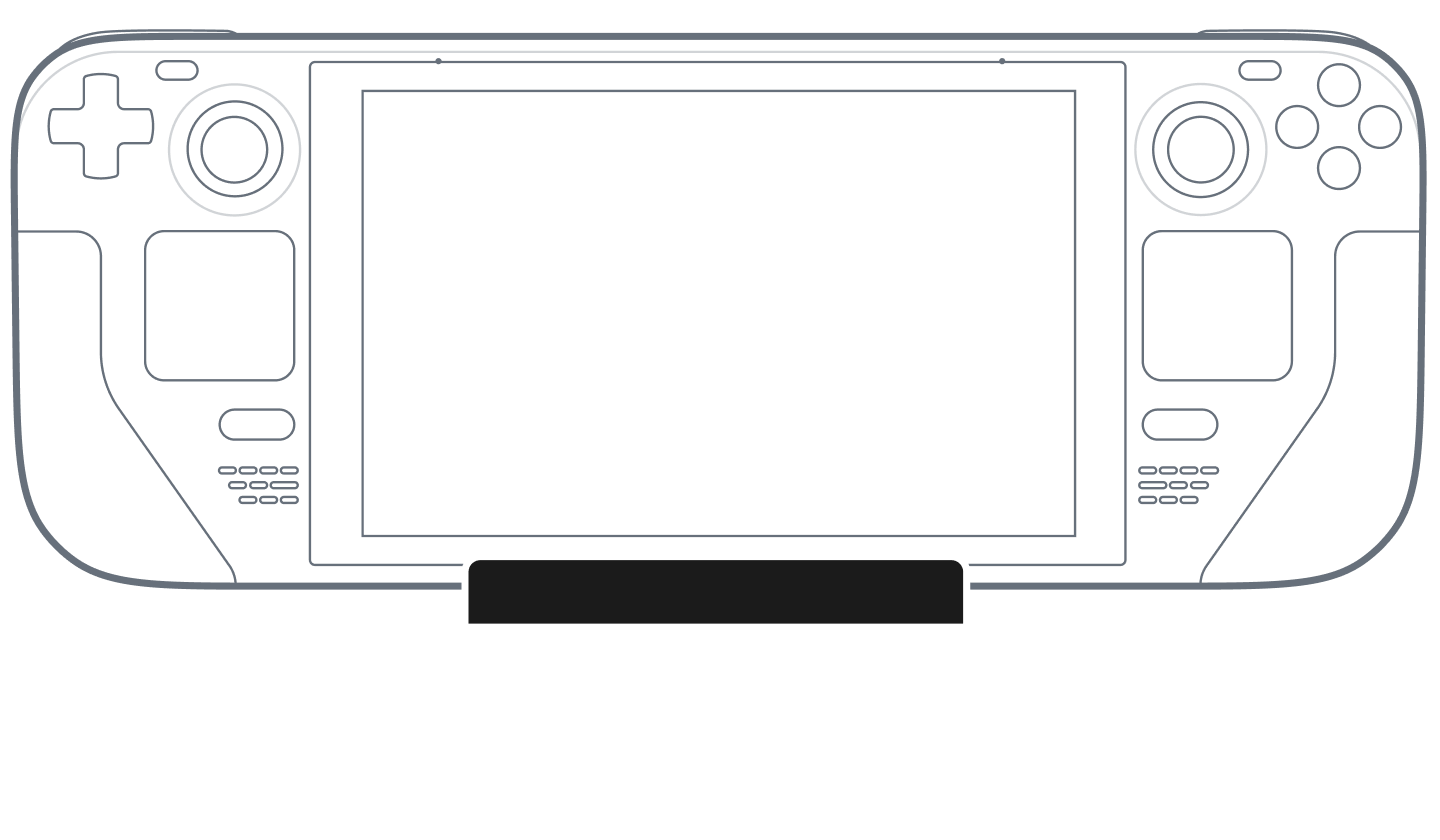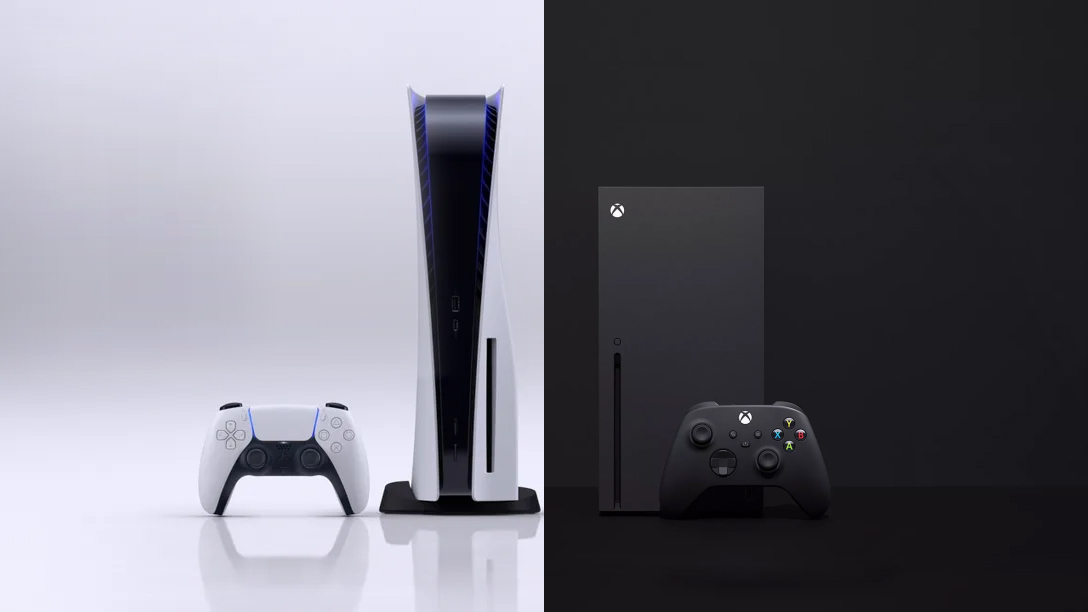In case you didn't feel the tremors, an earthquake pretty much rattled the handheld PC community today with the announcement of the Steam Deck. Since that announcement, there's been a lot of hyperbole thrown around, mostly due to Valve's very successful marketing of the lowest-tier Deck. At a mere $399, it's easy to understand the hype. But as is always the case with things that sound too good to be true, read the fine print.
That's not to imply Steam Deck is bad, mind you. Far from it! Valve entering the market is one of the best things that could've happened for portable PC fans. The biggest concern for folks who've been in the market with current and previous devices is, of course, whether they just got burned on more expensive purchases. And everyone who's been eagerly waiting in line to buy is now feeling the FOMO and FUD. Is this the end of the independent handheld manufacturer?
I'll spoil this one early: no, not by a long shot. In fact, the sheer existence of Steam Deck is a good thing no matter which company you personally support. While you should certainly place your reservation on a Steam Deck if you want one, don't count out the competition either.
So... how much did you say again?
First, consider the real cost of the Steam Deck. Valve is offering the device in three tiers, priced at $399, $529, and $649, respectively. All three will perform the same, but feature differences in storage technology and capacity.
Naturally, it's the base model that has generated the most buzz. However, do not buy this one. Absolutely no one should be buying a gaming device in 2021 that supports nothing but eMMC and SD card storage. eMMC is soldered, meaning it is 100% non-upgradeable, and 64 GB of it is barely enough to do anything with anyhow. To put it in perspective, if you opt to install Windows, that will be just enough space for a base install plus updates, meaning your entire library will rely on SD cards.
The absolute minimum Steam Deck you should consider buying is the $529 256GB model, which uses NVMe storage. However, this is 99% most likely to be non-upgradeable as well. Valve has said as much, and while some are taking that as a wink wink to do it yourself--not so fast! If the PCB is designed for soldered eMMC, it probably doesn't have room for a discrete NVMe drive either, meaning that will be soldered too. So, you'll still be relying on SD cards. (UPDATE (07/22/21): Valve has confirmed that the internal SSD is not soldered, but rather uses a 2230 M.2 slot. Though technically upgradeable, capacity is limited at this form factor, and prices are even higher than standard 2280 SSDs. This is great news for longevity. However, at present, the point still stands.)
Really, the $649 512GB model is the only one approaching reasonable. This is enough storage to keep a handful of favorite games on the internal drive while keeping backups on an SD card. Yes, backups. While 7th-gen games and older should have no issues running off an SD card, 8th-gen will vary and 9th-gen will be an absolute no-go. High-speed SSDs are the new standard this generation, and as time goes on, fewer and fewer games will work well running off an SD card directly.
If you do decide to utilize that SD card space, expect to spend at least $50-75 more on a large enough one to be worthwhile. If you find that Steam OS isn't for you and you want to install Windows, that'll be another $100 for the license.
In other words, for Steam Deck to actually match its competitors, you'll be spending at least $800.
Now, this is still a great price for what you're getting! But it's also not a huge leap from an Aya Neo or GPD Win 3 (depending on where you buy it). The impression that it is, is pure marketing. Kudos, Valve, well played.
How do I look from this angle?
So, with the pricing more similar than meets the eye, let's consider a reason you might prefer an alternative device:
Simply put, the Steam Deck is huge. It has the same screen profile as an Aya Neo--7" at 1280x800--but is probably a solid 1-2" wider, judging by photos. We're talking a full Imperial foot wide. Other devices, by comparison, are much more akin to the handheld game consoles of the past most of us were inspired by in the first place. The GPD Win 3 is the biggest difference here. I simply can't imagine anyone who prefers a Switch Lite profile being OK with a Steam Deck. But even the Aya Neo is far more sleek and compact. And while the One XPlayer may be even bigger still, it at least offers the ability to serve as a laptop hybrid, which Steam Deck really can't. 12" is fine for a laptop screen, but a 7" box in a 12" form factor? Not so much.

Beep! Beep! * Pew *
Next, let's talk about speed. Valve did a great job here. I won't delve into CPU tech specs here, because they're irrelevant--and that's the genius of it. Current-gen handhelds are already bottlenecked by the GPU, not CPU, so Valve opted for a CPU that's better balanced to the GPU of their choosing--and they chose well. Snagging the first ever mobile RDNA2 chipset is a huge win for portable graphics power. But also, it's not so much better that existing handhelds are out of the running.
A good way to look at this is to consider the difference between a PS4 and PS4 Pro. Fundamentally, they do the same things, and they mostly look the same doing it. One just provides either a smoother or a more refined experience than the other. It is unlikely the Steam Deck will do both versus other handhelds, and that's for one simple reason: power constraints.
Power is, honestly, the bane of all these devices. Whatever specs they contain, you can forget about actually seeing those numbers in the real world, and that's because you're constantly playing a ballet of CPU and GPU leaping and twirling around each other to get some kind of reasonable battery life. At a mere 40 watt hours, Valve is clearly banking on the new AMD GPU being more power efficient, not just faster, and that means the "1.8x the performance of an Aya Neo" claim is far from a universal truth.
In general, all current-gen devices will run the same content. Steam Deck will doubtlessly get higher FPS or image quality doing it, but you won't be missing out by playing on something else. In fact, there may come a time in the near future when having an SSD is so important that lower-tier Decks can't run new titles that less powerful devices can. Woopsie.
One for all...
But the biggest and most important reason not to fanboy or disparage over Valve entering the handheld PC market is because... it will actually help GPD, Aya, and One Netbook. The reality is, anyone willing to put up with the disadvantages of the $399 Deck was never going to be the customer of a $1,000 device to begin with. In that case, all Valve is doing is adding people to the ecosystem, which means better support and publicity of handheld PC's in general.
On the high end, Valve is still undercutting the competition, but not by as much as it initially seems (see first point). While third-parties don't have the luxury of subsidizing hardware sales with software, this will still drive competition in other ways. Everyone else now has to make sure you believe their devices are worth the premium--and it's not actually that hard to do. Smaller handhelds, hybrid handhelds, prettier handhelds... whatever the case may be, there's a myriad ways to attract customers who aren't satisfied with Valve's offering. By the time Steam Deck releases in December, anyone will be able to make a device with equivalent performance. It's inevitable other companies will leap-frog Valve a few months later. And the circle of tech will go on.
What this means for you is... congratulations, you have choice! Just a year ago, GPD was pretty much the only game in town. Now, there is no "right" or "wrong" device, just the one that you enjoy most. This is exactly what everyone should want to see.
So no, GPD, Aya, and One Netbook are not going anywhere. Demand is only rising, and supply is nowhere close to fulfilling it all yet. That will take still more companies tossing their hat into the ring--not knocking other companies out of it.
Speaking of which! So, Alienware, about that UFO...







